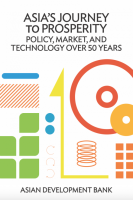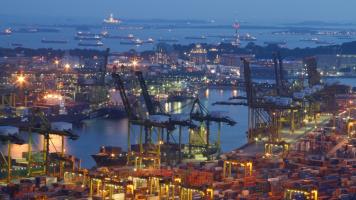
The world’s largest semiconductor companies are in Southeast Asia. Photo credit: ADB.
Manufacturing and trade benefited from the global electronics upturn and shifts in global supply chains.
The Asian Development Bank (ADB) raised Southeast Asia’s growth outlook to 4.7% this year from a previous forecast of 4.5%. The December 2024 edition of the Asian Development Outlook (ADO) cited stronger manufacturing exports, particularly from the electronics industry, and public capital spending in larger economies as the reasons for the improved outlook. The forecast for Southeast Asia next year is unchanged at 4.7%.
ADB sees economic growth in developing Asia and the Pacific to remain steady until 2025, but policy changes in the United States under the incoming Trump administration may impact the region.
“Strong overall domestic demand and exports continue to drive economic expansion in our region,” said ADB Chief Economist Albert Park. “However, the policies expected to be implemented by the new US administration could slow growth and boost inflation to some extent in the People’s Republic of China (PRC), most likely after next year, also impacting other economies in Asia and the Pacific.”
In Southeast Asia this year, ADO said the manufacturing and trade sectors benefited from the global electronics upturn and shifts in global supply chains, with high-income tech exporters seeing gains from rising semiconductor sales.
The world’s largest semiconductor companies are in the subregion. According to the ASEAN Investment Report 2024 report, these multinational enterprises are increasing their investments, expanding production capacity, developing new business functions, or growing their regional footprint in Southeast Asia to meet rising global demand.
Growth picked up in Malaysia, Thailand, Singapore, and Viet Nam, supported by domestic demand, lower inflation, and sustained public investment. The ADB report noted rising foreign investment in Viet Nam, while Indonesia and the Philippines are on track to meet previous growth forecasts. However, geopolitical tensions, trade fragmentation, and severe weather events—such as Typhoon Yagi and Tropical Storm Trami—pose risks to growth, particularly in agriculture and infrastructure.
With the downtrend in global food and oil prices, the inflation forecast for Southeast Asia in 2024 is lower at 3.0%, down from the September forecast of 3.3%, while inflation for 2025 is 3.1% from the previous 3.2%. Only inflation forecasts for Cambodia and Myanmar are unchanged in 2024. In contrast, further easing in price pressures is expected in Brunei Darussalam, Lao People’s Democratic Republic, Malaysia, and Thailand in 2025. In most economies, a moderation in inflation provided scope for monetary policy easing—following the US Federal Reserve’s rate cut in September.


